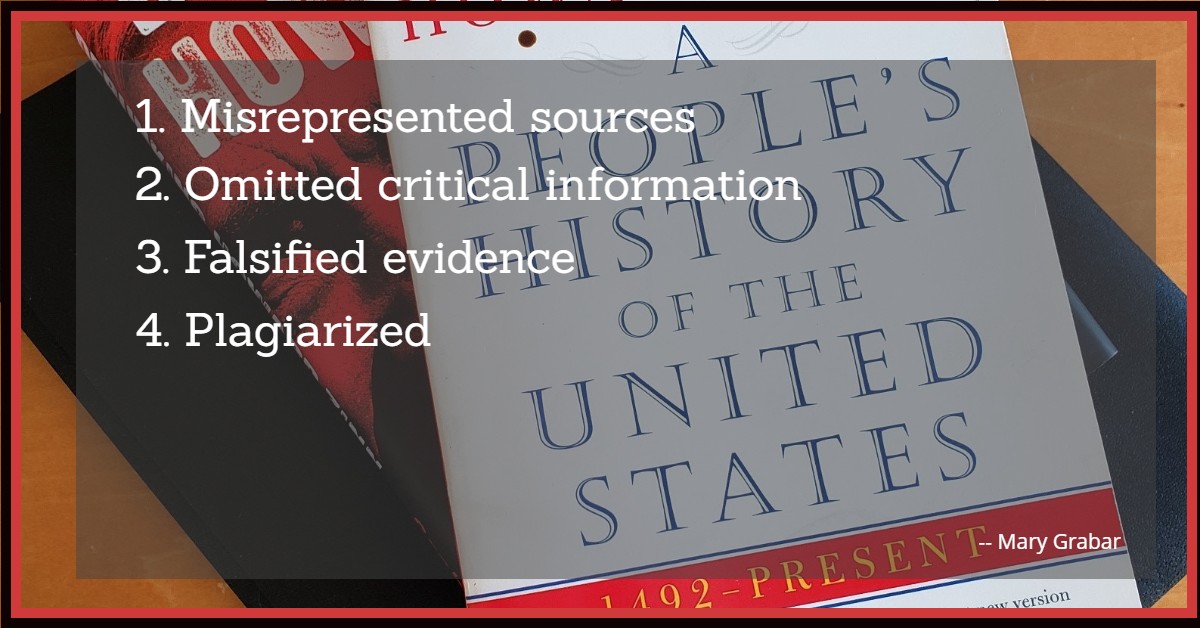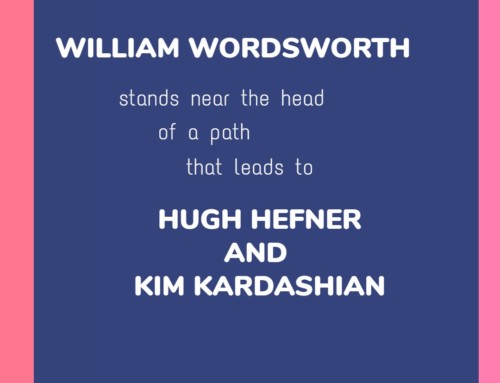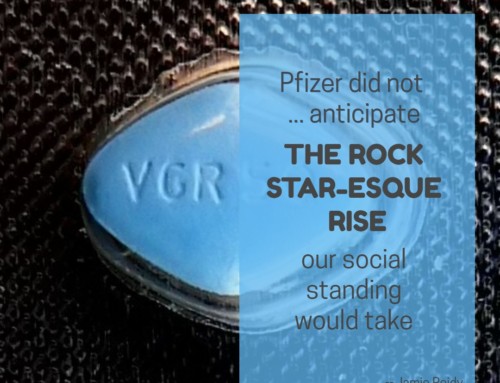So, who remembers their high school history textbook?
Chances are, if you attended between 1980 and today, you studied Howard Zinn’s A People’s History of the United States.
Writers of Zinn’s era approached history in a new way, concentrating less on kings, presidents, and tycoons and more on the guy on the assembly line, the waitress, the cancer patient, all the people affected by the kings, presidents and tycoons.
Nothing wrong with that. Probably high time to tell the little guy’s story. And I’m as much a sucker for a book that promises “the real story” or “what they didn’t tell you . . .” as any other eager reader.
The problem with Zinn’s history, according to Mary Grabar, is that he “misrepresented sources, omitted critical information, falsified evidence and plagiarized.” Grabar lays out her case in Debunking Howard Zinn: Exposing the Fake History That Turned a Generation Against America.
She cites historians on the left on the right, who call Zinn out on his sleight of hand. She names other writers who committed the same errors, detailing the punishments doled out by their peers: jobs lost, books pulled from shelves, corrections demanded, reputations de-lustered.
But Zinn’s star has only risen. And his history book shows no sign of slowing down. Says Grabar,
According to a September 2018 [Zinn Education Project] website post, ‘Close to 84,000 teachers have signed up to access’ ZEP’s history lessons and ‘at least 25 more sign up every day.’
ZEP sends organizers to give workshops to librarians and teachers on such topics as the labor movement, the environment and climate change, ‘Islamophobia,’ and ‘General Approaches to Teaching People’s History’ (with full or partial costs borne by the school!).
Can any of these teachers claim they don’t know Zinn’s politics? He never hid his Communist leanings. His writing matches the Communist worldview of oppressor vs. oppressed. He even admitted that his kind of history was meant to be a “’[tool] for contending social classes, races, nations.”
The young Zinn taught at Spelman College, a Christian school for black women. Even there, he went about “transforming college students from devout Christians to revolutionaries.”
Let’s look at history through Zinn’s eyes:
On Columbus, Zinn writes about a man intent on enslaving Indians and grabbing gold. Grabar points out the ellipses Zinn inserted in his quotes from Columbus’ diary (plagiarized from another writer). Fill in the . . . and the story changes — a lot.
On civil rights, Grabar documents Zinn’s hands-on approach, showing up at marches and riots where savior-like activists enlisted “teenagers and even children over the wishes of their parents. This had to be done for lack of adult volunteers: the majority of Southern blacks, although in favor of ending segregation, were opposed to the mass demonstration strategies the Zinn celebrates.” In fact, Zinn waxed exultant over the chaos. The more blood spilt, the more arrests made, the more demonstrators beaten, the happier he sounded. One week, he might lead a march for voting rights and, the next week, criticize voting as much too tame, “a cooling mechanism” that only pacified the oppressed.
On Vietnam, Zinn participated in the release of The Pentagon Papers. “The Pentagon Papers,” writes Grabar, “obscured what had been accomplished between May 1968 and June 1971, giving the American public the false impression that the war was unwinnable. Left-wing journalists exploited the ‘revelations’ in the Pentagon Papers and distorted the material in them, thus contributing to defeat in Vietnam. In doing so, they were following a line of propaganda that would successfully undermine the American public’s support for the war and thus prove instrumental to our defeat — and ultimately to the subjection of millions of East Asians to bloody Communist tyrannies.” Also, any sympathy for actual Vietnamese people rushing to escape the advancing Communists never made it into his account.
Any other historian who violated professional standards would be called to account. Why not Zinn? Grabar asks. If past histories need correcting, if heroes need to be shown in a more human light, so be it. But historians still need to stand on truth, not bias.
Put a book like this into high school and college classrooms and why wouldn’t its young readers want to trash their country? But the Zinn Education Project continues apace, “providing curricular materials about Christopher Columbus, . . . materials for conducting political campaigns to abolish Columbus Day with sample resolutions for school districts, universities, and cities and specific instructions for engaging students in letter-writing campaigns and presentations to school boards.”
Ideas have consequences. According to Grabar, Zinn meant all along to foment revolution. On civil rights alone, “Zinn expresse[d] no dismay at innocent lives lost in these riots. He expresse[d] no concern for African Americans who had to live in the midst of rioting and see their neighborhoods destroyed.”
Time to stuff a different history text into your kid’s backpack.
Graphic created on Snappa.com







Leave A Comment